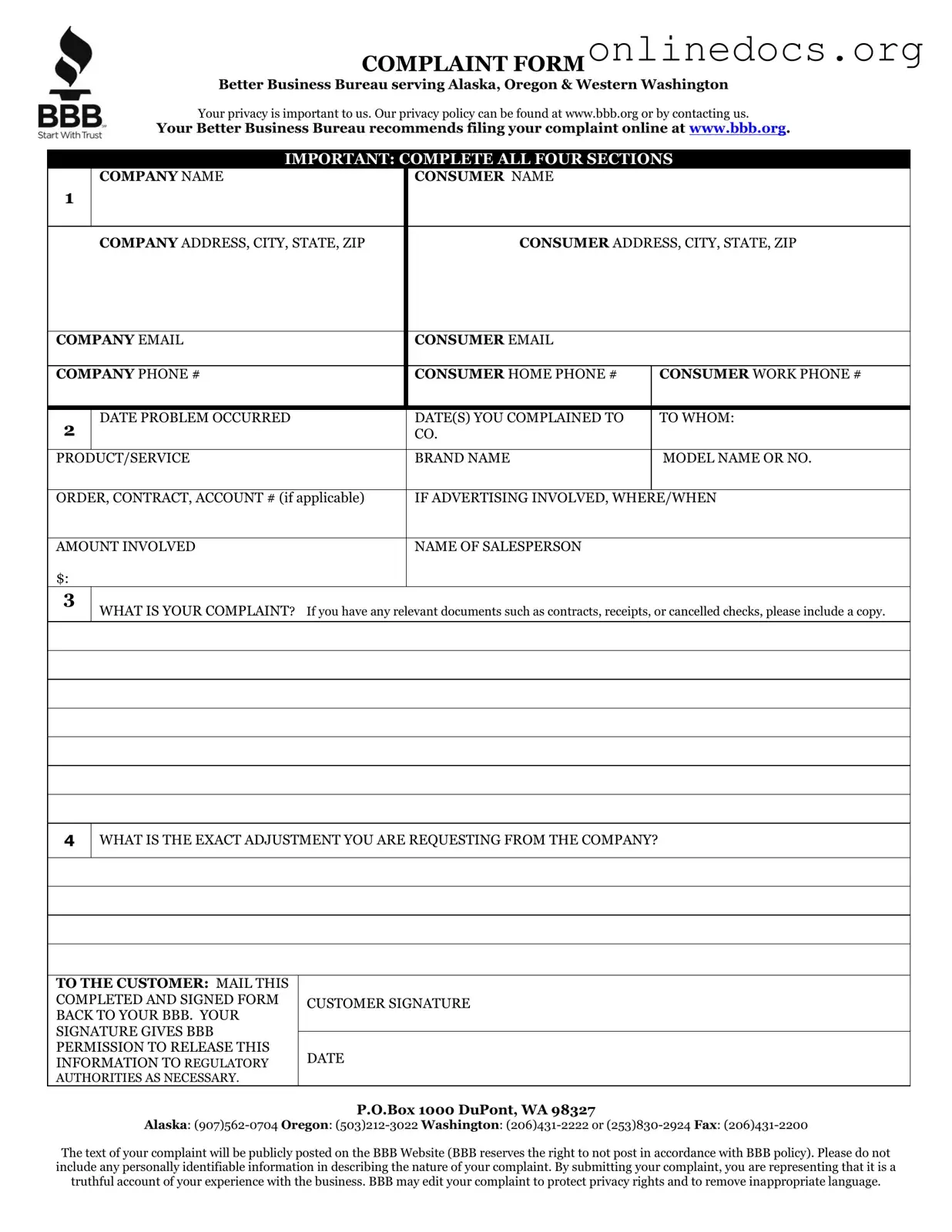When filling out the BBB Complaint form, many individuals make common mistakes that can hinder the resolution process. One of the primary errors is providing insufficient details about the issue. A vague description can lead to confusion and may prevent the BBB from understanding the problem fully. It’s crucial to include specific information such as dates, times, and the nature of the complaint.
Another frequent mistake is failing to include supporting documentation. Complaints without evidence, such as receipts, emails, or photographs, may be less compelling. Attach all relevant documents to strengthen your case. This additional information can provide context and support your claims effectively.
People often overlook the importance of choosing the correct business category. Selecting the wrong category can delay the processing of your complaint. Make sure to carefully review the options available to ensure your complaint reaches the right department.
Additionally, some individuals neglect to provide their contact information. While it may seem unnecessary, the BBB often needs to reach out for clarification or updates. Providing accurate contact details ensures that you stay informed throughout the process.
Another mistake is being overly emotional in the complaint. While it’s understandable to feel frustrated, using aggressive language or personal attacks can undermine the professionalism of your complaint. Stick to the facts and present your case calmly.
Many people also fail to check for grammatical errors and typos. A well-written complaint reflects your seriousness about the issue. Errors can distract from your message and may lead to misunderstandings.
Some individuals forget to indicate their desired resolution. Clearly stating what you want—whether it’s a refund, replacement, or another form of compensation—can help guide the BBB in addressing your complaint effectively.
Finally, not following up on your complaint is a common oversight. After submitting the form, it’s essential to monitor its status. If you don’t hear back within a reasonable time, consider reaching out for an update. This proactive approach can help keep your complaint moving forward.
